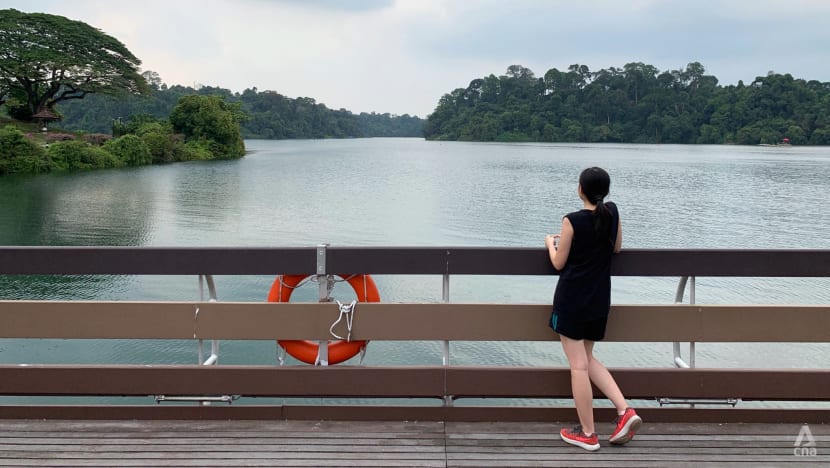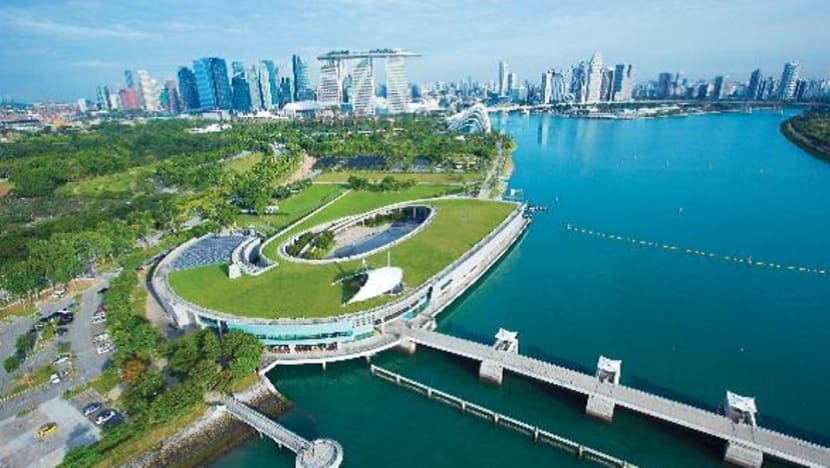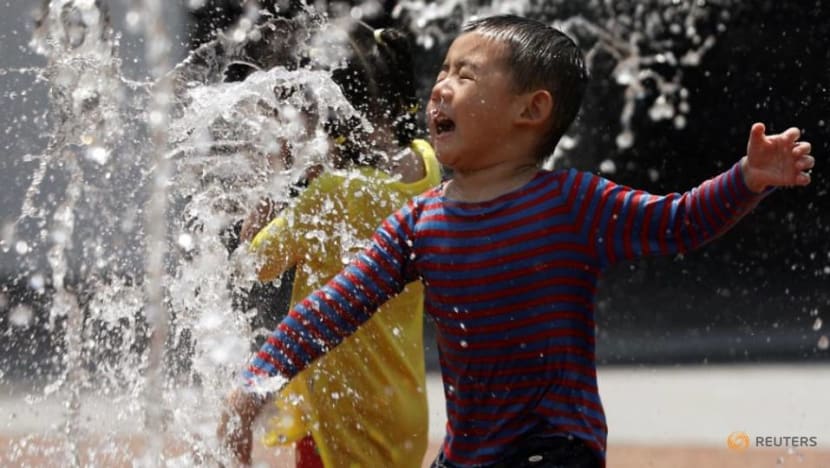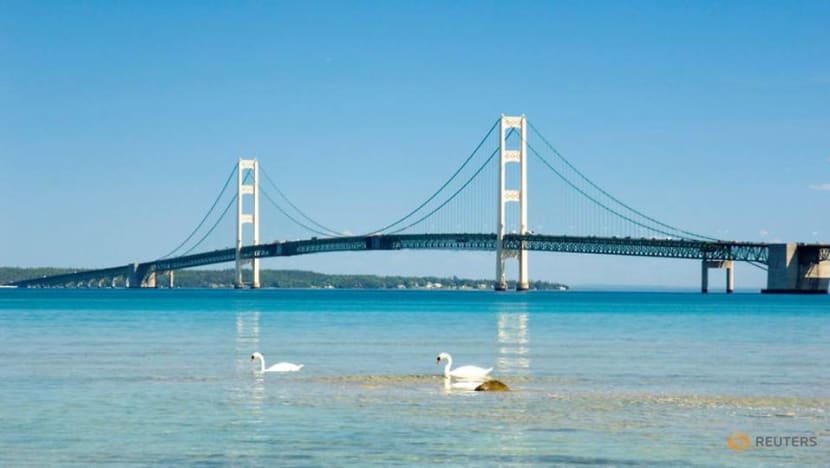commentary Commentary
Commentary: Beyond scarcity and security, does Singapore need a new water narrative?
Have strides made in water management drowned out a longstanding attitude concerning the importance of water conservation? Can a new culture of empowerment and ground-up action reverse that tide?

A person looks out over the water at a reservoir in Singapore. (File photo: CNA/Jeremy Long)
SINGAPORE: Water conservation has been an ethos drilled into those of my generation.
I remember my primary school conducting at least one water-rationing exercise. Water coolers, taps and toilets were shut off for a few hours.
It was not the most pleasant experience. At 11, when you had to go, you went. And you only had a small pail of water to flush down your business.
But this deliberately painful exercise indeed underscored how precious timely and reliable access to water was.
RECEDING INTO MEMORY
As Singapore continued to develop into a towering metropolis and adopted advanced, innovative methods of water purification, memories of shortages – real or simulated – appear to have receded into the crevices of the public psyche.
The strides made in enhancing Singapore’s water security through the years have instead created a newfound confidence, which is a positive development to be welcomed.
Investments were poured into enlarging water catchment areas, upgrading infrastructure and diversifying sources through NEWater and desalination. The Marina Barrage, the most iconic and visible symbol of the Singapore water story, also turns 11 this year.
READ: The Marina Barrage, a dream 20 years in the making, a commentary
Singapore’s water story underscores our founding fathers’ ingenuity, in turning adversity into opportunity and strength, said Prime Minister Lee Hsien Loong at a ministerial forum at the Singapore University of Technology and Design in 2018.
These words perhaps reflect why it’s hard for many to shake off the feeling that water has become less of a national security imperative over the years.

NEW CHALLENGES
Still, Singapore faces fresh challenges in ensuring we have reliable access to sufficient water. Weather extremes predicted with climate change, in the form of global warming and dry seasons, put the country’s key water sources at risk.
That Linggiu reservoir in Johor, which provides Singapore with a sizable 250 million gallons of its water supply, was at significant risk of running dry in 2017 shocked many.
Flash floods and massive downpours have also made too much water another key issue. A downpour in one evening in November 2018 saw 100mm of rain fall on Bukit Panjang in under two hours – 40 per cent of the average typical monthly rainfall for November.
What a water management system that can withstand both droughts and floods should look like is certainly something authorities can afford to articulate more on.
READ: What Singapore can do to prepare for the next flood, a commentary
Another challenge comes from the politically charged exchanges on the water agreements between Singapore and Malaysia, which has come under the media spotlight over the last year.
Even then, when desalination and NEWater meet up to 70 per cent of water demand, is ensuring a full supply of water from Johor still existential for Singapore? Is the narrative of water conservation to deal with scarcity still valid?
DOES WATER FEEL FAR REMOVED FROM OUR DAILY LIVES?
Despite new challenges facing Singapore’s water supply, the danger is if Singaporeans see this as a distant issue, one far removed from our lives.
The initial sharp public reactions to the announcement at Budget 2017 that water prices would be raised were telling, especially because it didn’t seem to reflect a deeper understanding of water’s scarcity, nor the true cost of water production.
Although many Cabinet Ministers and Members of Parliament came out to highlight how Singapore was one of the most water-stressed countries in the world and water is a strategic resource, how many of us complained - but then just moved along and paid our bills as usual?
READ: Has the well of good ideas and public policy on water run dry? A commentary

Quite a few I imagine. A street poll of 100 respondents in March 2017 after the hikes were announced also showed 75 per cent were not even aware of how much they spent on water each month.
"Singaporeans have been taking water for granted just because nothing has happened in the last few years," Asit Biswas, then visiting professor at the Lee Kuan Yew School of Public Policy told local media outlets.
Still, the fact the poll came after Minister for Foreign Affairs Vivian Balakrishnan highlighted in January 2017 that Singapore might not be able to draw its entitlement of water if Linggiu reservoir dries up suggests we don’t see water security to be a challenge and aren’t concerned about needing to reduce our water usage.
One would think Hyflux’s high-profile fall from grace, a story that has unfolded since 2018, would have jolted national consciousness about the fragility of our water supply.
But a survey conducted by PUB and REACH in October last year showed younger participants viewed water scarcity as “a distant concept” compared to their older counterparts.
READ: The fall of once-great Hyflux, a unicorn in the Singapore story, a commentary
That PUB has stepped in to highlight it is ready to take over the desalination plant at zero dollars if Hyflux’s Tuaspring does not resolve defaults certainly suggests that the situation is grave and that authorities are willing to provide a water security safety net.
Still, the online reactions over the unfolding drama have been less about water security and more about whether Hyflux’s proposed restructuring may be jeopardised and how much of their money retail investors will get back.
WE NEED NEW WATER NARRATIVES
It can therefore be argued that Singapore needs a refreshed narrative over water, beyond that of scarcity or even security.
Part of it might be that there isn’t a call to action beyond the tactical message of needing to conserve water. Some out-of-the-box thinking and a new strategic lens from which to view water might be in order.

Instead of scarcity or security, why not highlight its centrality to our everyday lives?
Why not emphasise water as an enabler that powers the economy? It is the lifeblood for many strategic sectors including petrochemicals, pharmaceuticals and electronics, which collectively create hundreds of thousands of jobs and billions of economic output.
Why not highlight how it nourishes families and provides a beautiful living environment for Singapore? Scores of joggers and families stroll by the canal I live close to each evening just to enjoy the serene environment and get away from the day’s hustle and bustle.
READ: Singapore’s water story underscores the value of preparedness, a commentary
And instead of water conservation, why not advance a larger national narrative of water guardianship, to inspire Singaporeans towards a moral commitment to preserving water for the next generation and collaborate with others to these ends?
A GROUND-UP APPROACH
A ground-up approach that involves local communities can galvanise support and awareness.
Around the Great Lakes, which straddle parts of Canada and the US, people collaborate to protect this strategic water resource, which might be instructive.
Detroit residents have rallied together to create gardens, parks and picnic areas, while Michigan groups have raised funds to restore wetlands and improve fish habitats.
Businesses, think tanks, school and communities have also become more organised in driving an agenda for change in priority areas and find support from authorities.
In Canada, funding for Great Lakes protection from the government alone has catalysed over 36 wide-ranging initiatives in 2018 – enlisting groups to participate in monitoring and analysis, the rolling out of best practices, and the scaling up of environmental rehabilitation projects.
Great Lakes advocates work with government officials on a range of water causes, promote water conservation as a community ethos in the process, and are empowered to reach across national borders to form constructive partnerships.

A Council of the Great Lakes Region has also been formed since 2011, made of regional leaders from governments, business, non-profit, academia and local communities to identify areas for greater collaboration, knowledge-sharing and advocacy.
Back to Singapore. If funding from the Ministry of Environment and Water Resources could be shifted towards catalysing local community projects, younger Singaporeans could be empowered to exercise ownership over their living environment and water resources.
READ: How to make water issues matter to world leaders, a commentary
If cross-border Singapore-Malaysia research and community projects could be initiated, both sides could work together towards a shared vision of tackling common water challenges.
CENTRAL TO OUR LIVES
Ultimately, we need to think about what legacy Singapore wants to leave the next generation with and how water fits in that picture.
To be sure, words, narratives and projects can only go so far but it’s worth reviewing our national narrative on water to spur a new generation of Singaporeans to embrace water, not just as a resource to conserve, but one that is central to all facets of our lives.
Lin Suling is executive editor at Channel NewsAsia Digital News where she oversees the Commentary section.












